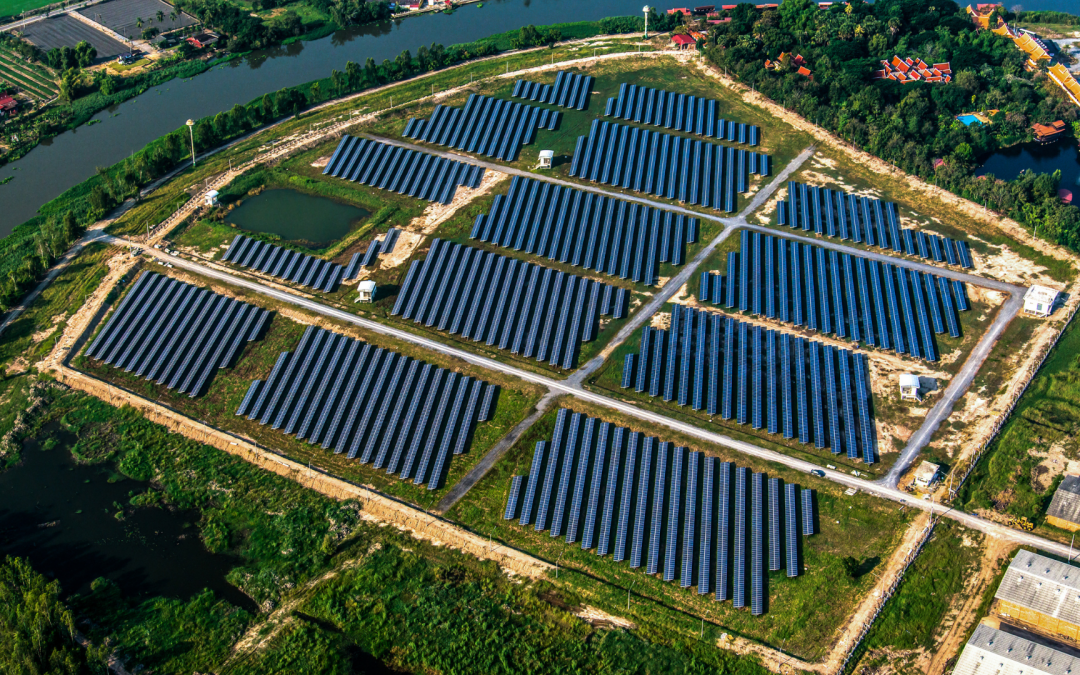As the world shifts toward renewable energy to combat climate change, solar farms have emerged as a key player in the transition to a sustainable future. However, like any large-scale infrastructure project, solar energy developments can have unintended consequences on local ecosystems and wildlife. The challenge lies in striking a balance between progress and preservation—harnessing the power of the sun while minimizing environmental impact. This article explores the effects of solar energy and wildlife and outlines strategies to mitigate potential harms.
1. The Impact of Solar Farms on Local Ecosystems
While solar energy is a clean and sustainable alternative to fossil fuels, the installation of large solar farms can disrupt local habitats in various ways:
- Habitat Loss and Fragmentation: Utility-scale solar farms require significant land space, which can lead to the displacement of native plant and animal species. Clearing vegetation and altering landscapes can disturb delicate ecosystems and migration patterns.
- Heat Island Effect: Large solar panel installations can create localized temperature increases, known as the heat island effect, which may affect surrounding flora and fauna.
- Disruptions to Birds and Pollinators: Solar panels can be mistaken for water bodies by birds, leading to potential collisions. Additionally, land clearing may reduce the availability of flowers and plants essential for pollinators like bees and butterflies.
- Wildlife Movement Barriers: Fencing and other security measures around solar farms can obstruct the natural movement of animals, affecting foraging and mating behaviors.
2. Strategies for Wildlife-Friendly Solar Development
To ensure that solar farms contribute to sustainability without harming wildlife, developers and policymakers are adopting various mitigation strategies:
a. Site Selection and Land Use Planning
- Prioritizing the use of previously developed land, brownfields, or abandoned agricultural sites instead of pristine natural habitats.
- Conducting thorough environmental impact assessments to identify and protect critical wildlife corridors.
- Co-locating solar farms with existing infrastructure, such as highways and industrial zones, to minimize habitat disruption.
b. Pollinator-Friendly Solar Farms
- Planting native wildflowers and grasses beneath and around solar panels to support bees, butterflies, and other pollinators.
- Avoiding pesticide use and promoting biodiversity to create a balanced ecosystem within solar sites.
c. Wildlife-Friendly Fencing and Passageways
- Designing fencing that allows small mammals, reptiles, and amphibians to pass through safely.
- Establishing wildlife corridors and buffer zones around solar farms to support habitat connectivity.
d. Avian Protection Measures
- Using non-reflective panel coatings and strategic panel placement to reduce bird collisions.
- Installing bird deterrents, such as patterned panel designs, to minimize confusion with water bodies.
- Monitoring bird activity and adjusting designs based on migration patterns.
e. Dual-Use Solar (Agrivoltaics)
- Integrating solar panels with agricultural practices (agrivoltaics) to allow land to be used for both energy generation and farming.
- Grazing livestock like sheep under solar panels to maintain vegetation without harming wildlife.
3. Case Studies: Successful Wildlife-Conscious Solar Farms
a. Minnesota’s Pollinator-Friendly Solar Initiative Minnesota has led the way in designing solar farms with pollinator habitats, demonstrating that renewable energy can enhance biodiversity rather than degrade it.
b. Desert Tortoise Protection in the Mojave Desert In California, solar developers have worked with conservationists to create designated pathways for desert tortoises, ensuring their migration routes remain undisturbed.
c. Agrivoltaic Projects in Europe Countries like France and Germany are pioneering agrivoltaic systems that combine solar panels with agricultural crops, proving that land can serve multiple purposes without harming the environment.
4. Policy and Industry Leadership in Sustainable Solar Development
Governments and industry leaders play a crucial role in ensuring that solar energy projects align with conservation efforts:
- Establishing regulations that require environmental assessments and wildlife protection measures for new solar projects.
- Providing incentives for solar farms that integrate biodiversity-friendly practices.
- Encouraging research into innovative solar panel designs that minimize impact on local ecosystems.
5. The Future of Solar and Wildlife Coexistence
As the demand for solar energy grows, it is essential to develop new technologies and best practices that promote harmony between clean energy and nature. With continued research, thoughtful planning, and responsible development, we can ensure that solar energy remains a beacon of sustainability without compromising the health of our planet’s ecosystems.
Solar energy is a vital component of the fight against climate change, but it must be implemented responsibly. By prioritizing eco-friendly site selection, promoting pollinator habitats, designing wildlife-friendly infrastructure, and embracing agrivoltaics, we can harness the sun’s power while preserving biodiversity. As we move toward a renewable energy future, the goal should not only be clean power but also a thriving natural world where wildlife and solar technology coexist harmoniously.


Recent Comments